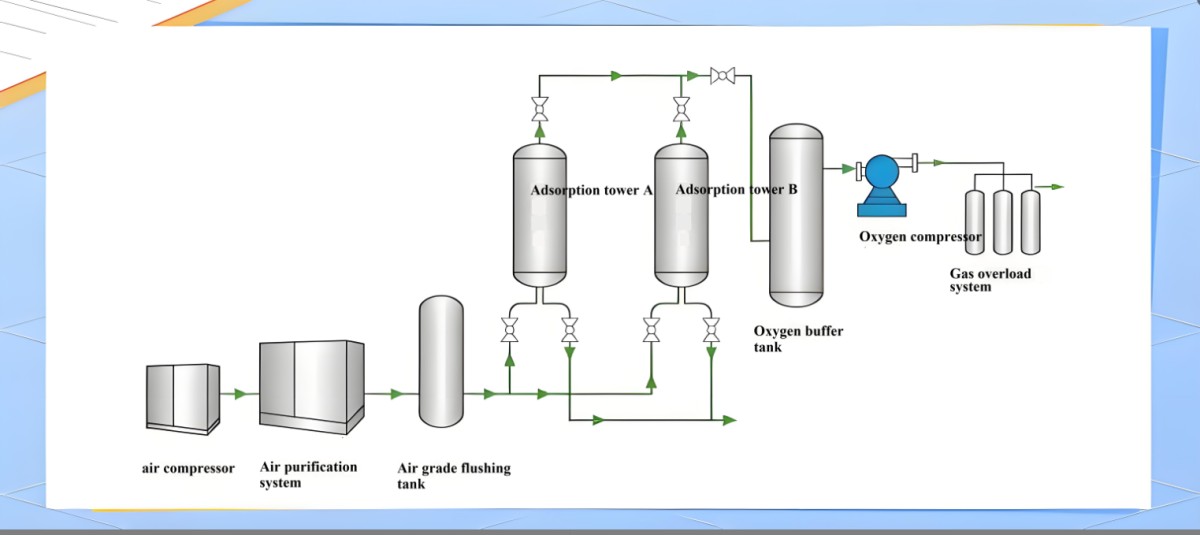A Selection Guide for Activated Alumina Desiccant in PSA Oxygen Generation Plants
Meta Description: Optimize your PSA oxygen generation system. This professional guide explains how to select the right Activated Alumina desiccant based on crush strength, moisture capacity, and particle size to ensure efficiency, purity, and long life.
Introduction
Pressure Swing Adsorption (PSA) technology has become a cornerstone for on-site oxygen generation across medical, industrial, and aquaculture applications. At the heart of a reliable PSA oxygen plant lies a critical pretreatment step: air drying. While the molecular sieves get the credit for separating oxygen, the Activated Alumina desiccant that protects them is the unsung hero. Selecting the correct Activated Alumina is not a matter of chance; it is a decisive factor for system longevity, product gas purity, and operational economy. This guide provides a professional framework for making an informed selection.
1. The Critical Role of Activated Alumina in PSA Oxygen Generation
Before selection, one must understand the function. In a typical PSA process, compressed air contains high levels of water vapor and carbon dioxide.
Primary Threat: Water Vapor. If not removed, water will permanently deactivate the zeolite molecular sieves used for nitrogen adsorption, leading to a catastrophic drop in oxygen purity and yield.
The First Line of Defense: Activated Alumina is placed in the pre-treatment towers to co-adsorb both water and CO₂. However, its most vital role is protecting the downstream zeolites from moisture. Its high affinity for water and exceptional stability make it the preferred choice for this harsh duty cycle of compression and regeneration.
2. Key Selection Criteria: Beyond Basic Specifications
When evaluating Activated Alumina for your PSA plant, focus on these four critical performance parameters:
1. Crush Strength (or Side Crush Strength): The Paramount Metric
Why it Matters: The PSA process involves rapid pressure swings (typically from 4-8 bar to atmospheric). This creates significant mechanical stress and particle-to-particle abrasion. Low crush strength leads to attrition and dusting.
The Consequence: Generated fines cause a pressure drop across the bed, increasing energy consumption. In severe cases, dust can migrate and foul the downstream molecular sieve beds.
Selection Advice: Prioritize grades with a side crush strength of >13 lbs/mm (or ~23 N/mm). This ensures physical integrity over thousands of adsorption-regeneration cycles.
2. Dynamic Moisture Capacity: The Measure of Efficiency
Why it Matters: This measures the amount of water the desiccant can hold under flowing gas conditions. A higher capacity means longer cycle times and more efficient use of the adsorbent bed.
The Consequence: Low capacity leads to shorter cycles, requiring more frequent regeneration and putting more stress on the switching valves. The "breakthrough" point, where moisture starts slipping through, is reached faster.
Selection Advice: Look for data on dynamic water adsorption at specific conditions (e.g., 25°C, 60-70% RH). A capacity of >14% is typically indicative of a high-performance grade.

3. Particle Size and Shape: The Controllers of Flow Dynamics
Why it Matters: Particle size affects the pressure drop across the bed and the attrition resistance. Spherical beads are superior to irregular shapes as they distribute stress more evenly and minimize dust generation.
The Consequence: Too small particles cause high pressure drop. Too large particles can lead to channeling, where gas bypasses the bed, reducing effective capacity.
Selection Advice: 3-5mm or 4-6mm spherical beads are the industry standard for most small to mid-sized PSA oxygen plants. This size offers an optimal balance between low pressure drop and high mass transfer efficiency.
4. Thermal and Chemical Stability
Why it Matters: Regeneration is achieved by heating the bed with a purge gas. The desiccant must withstand repeated exposure to high-temperature (180-250°C) purge gas without softening or degrading.
Selection Advice: Activated Alumina is inherently stable. Ensure the supplier guarantees performance over a high number of thermal cycles.
3. A Practical Selection Checklist for Plant Operators
Use this list when specifying or procuring Activated Alumina for your PSA system:
Crush Strength: Confirmed to be >13 lbs/mm to prevent attrition.
Moisture Capacity: Verified dynamic capacity >14% for longer cycles.
Particle Size: 3-5mm or 4-6mm spherical beads to optimize pressure drop.
Dust Content: Low initial dust content (<0.5%) indicates good handling and production quality.
Bulk Density: Consistent density ensures predictable bed volume and vessel filling.
Conclusion: An Investment in Reliability
Selecting the correct Activated Alumina desiccant is a low-cost investment that pays massive dividends in PSA oxygen plant performance. Do not base your decision on price alone. By prioritizing high crush strength and proven dynamic capacity, you directly safeguard your molecular sieve investment, minimize downtime, and ensure the consistent production of high-purity oxygen. Partner with a technical supplier who can provide certified data and support, turning your pretreatment stage from a potential vulnerability into a pillar of reliability.
Key words:
Activated Alumina Desiccant, PSA Oxygen Generation, Selection Guide
crush strength activated alumina, moisture capacity PSA plant, pressure drop adsorbent bed, molecular sieve protection
Can't find what you're looking for ?
Leave a Message we will call you back quickly!
Get in Touch
*We respect your confidentiality and all information are protected.

